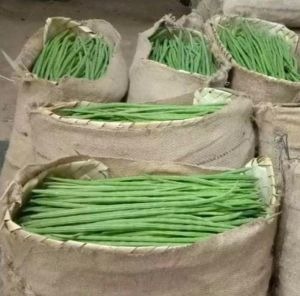
If you’ve ever had a plate of sambhar, drumsticks (also called moringa) need no introduction. In India, this humble vegetable has been a part of our kitchens for generations. But what many people don’t realize is that drumsticks are now a rising star in the global export market. And yes, India is leading the game.
Let’s dive into the world of drumstick exports — why they’re in demand, how India is tapping into this opportunity, and what the future looks like.
1. Why Drumsticks Are a Big Deal in India
For us, drumsticks are not just another veggie. They’re a nutritional powerhouse — rich in vitamin C, iron, calcium, and antioxidants. Ayurveda has celebrated moringa for centuries, using it to treat inflammation, boost immunity, and even improve digestion.
From drumstick curry in Tamil Nadu to moringa stir fry in Gujarat, they’re a staple in Indian households. This strong domestic love has naturally spilled over into international demand as Indian communities abroad want the same authentic taste.
2. India’s Drumstick Production at a Glance
Here’s a fun fact — India is the largest producer of drumsticks in the world, accounting for more than 80% of global production.
- Top Producing States: Tamil Nadu, Andhra Pradesh, Karnataka, Maharashtra, and Gujarat.
- Peak Season: December to April for fresh drumsticks.
- Annual Production: Over 2.2 million tonnes of drumsticks (as per APEDA and horticulture data).
This abundance gives India a natural edge in the export market. And with modern cold chain logistics, fresh drumsticks can now reach the Middle East, Europe, and even the US without losing quality.
3. Why the World Loves Indian Drumsticks
You might wonder — why are Indian drumsticks in such high demand abroad? The answer is simple: quality, taste, and health benefits.
- Authentic Flavour: Indian varieties like PKM-1 and PKM-2 have a tender texture and rich flavour.
- Nutritional Value: Recognised as a “superfood” in the West, moringa is used in soups, curries, and even smoothies.
- Medicinal Properties: WHO has called moringa the “Tree of Life” because almost every part of the plant is useful — from leaves to pods.
In recent years, moringa powder and oil have also gained popularity in the health supplements market, boosting the overall demand for drumstick exports.
4. Top Export Destinations
Indian drumsticks travel far and wide. According to APEDA data, India exports fresh drumsticks to more than 30 countries.
Major Markets Include:
- UAE – The largest importer due to the huge Indian diaspora.
- Saudi Arabia – Consistent demand for fresh produce.
- Qatar, Kuwait, Oman – Steady buyers year-round.
- UK & Europe – Rising demand in specialty and ethnic stores.
- USA & Canada – Growing market for frozen drumsticks and moringa products.
Fresh drumsticks dominate Middle Eastern exports, while frozen drumsticks and moringa-based products find more takers in Europe and North America.
5. Export Process for Drumsticks from India
If you’re thinking about getting into this business, the process is simpler than you might think.
Step-by-Step Overview:
- Register as an Exporter – Get an Import Export Code (IEC) from DGFT.
- Meet Quality Standards – Follow APEDA and phytosanitary guidelines.
- Source Fresh Produce – Work directly with farmers or wholesale markets.
- Cleaning & Grading – Remove dirt, trim ends, and grade by length & thickness.
- Packaging – Use ventilated cartons for fresh drumsticks; vacuum-sealed packs for frozen.
- Cold Chain Logistics – Maintain temperature to ensure freshness.
- Customs & Shipping – Handle export documentation, fumigation, and shipment.
Pro tip: Middle East buyers often prefer air freight for fresh drumsticks to maintain crispness and flavour.
6. Government Support & Export Policies
The Indian government, through APEDA (Agricultural and Processed Food Products Export Development Authority), actively promotes vegetable exports.
Exporters can benefit from:
- Market development schemes for promoting products abroad.
- Participation in international food fairs.
- Quality certification assistance to meet global standards.
India also has APEDA-approved packhouses in major producing states, ensuring the produce meets export quality norms.
7. Challenges in Drumstick Exports
Like any agri-export, drumsticks come with their share of hurdles:
- Perishability: Fresh drumsticks have a short shelf life (around 7–10 days).
- Quality Variations: Inconsistent size, colour, or texture can lead to rejection.
- Logistics Costs: Air freight for fresh produce can be expensive.
- Market Competition: Other countries like the Philippines and Kenya are increasing production.
But these challenges can be overcome with better cold storage, pre-cooling techniques, and contract farming.
8. Opportunities and Future Growth
Here’s the exciting part — the global moringa market is booming.
- The global moringa market size is expected to reach USD 10 billion by 2030, growing at over 8% CAGR (as per industry reports).
- Demand for organic produce is rising, especially in Europe and North America.
- Value-added products like moringa powder, capsules, and tea are gaining popularity.
For Indian exporters, this means:
- Diversification – Don’t just sell fresh pods; explore moringa leaves, powder, and oil.
- Branding – Build your brand as a premium, organic moringa supplier.
- E-commerce Exports – Platforms like Amazon and Flipkart Global can help reach retail customers directly.
9. Conclusion: India’s Place in the Global Drumstick Market
The export of drumsticks from India is no longer a niche business — it’s a global opportunity waiting to be tapped. With our unmatched production capacity, rich varieties, and rising demand for health-based foods, India has the perfect recipe for success in this space.
If you’re an agri-entrepreneur or exporter, this is your chance to ride the moringa wave. Start small, ensure quality, and target the right markets — and you could be shipping “a taste of India” to plates around the world.
Final Thought: The next time you see a drumstick in your sambhar, remember, it’s not just a vegetable, it’s a growing symbol of India’s agricultural strength.